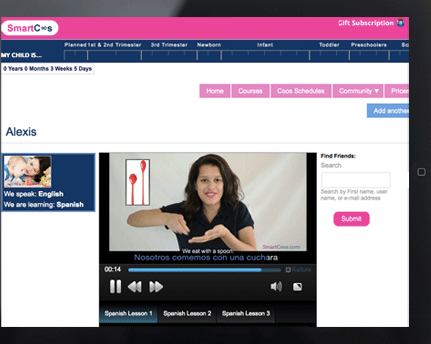With foreign language degree programs going on the chopping block across the country, and media, business and education leaders sensationalizing the need for a million coders by 2020, one would assume that investment in foreign language training should decrease to fund teaching kids how to code. But is there more to the relationship between human languages and programming languages than meets the eye? In the digital age, the impact of immigration and globalization provides new context for the role of foreign language training, as these two entrepreneurs realized.
Latin to C++: Advantages of Learning Multiple Languages
“Call me when you graduate. That’s what a Microsoft executive told me when he found out I was headed to Oxford to study Latin and Ancient Greek,” said Lida Zlatic, co-founder of ClassTracks, a blended learning platform for the world language classroom and member of 4.0 Schools’ Launch Cohort 10. “Apparently in software development, it’s difficult to find non-technical people who understand the way our programmers think. And he viewed what it took for me to learn Latin as analogous to what it took his programmers to learn to code,” commented Zlatic.
The hiring manager went on to explain how all the Classics majors he has recruited have been able to immediately begin communicating with their developers as product managers. But since she had no interest in working for a software company after graduation at that time, Zlatic decided to enter the classroom as a Spanish teacher in West Baltimore.
Her time in the classroom highlighted a major inefficiency in the way foreign language curricula is delivered, fueling her drive to build a team to tackle it. “Foreign language teachers spend 80% of their class time drilling students on vocabulary and grammar, even though studies show that true language proficiency comes from conversation,” explained Zlatic. “We’re developing a learning and assessment platform to help teachers flip the 80/20 ratio.”
The trend of software revolutionizing traditional areas of academia is certainly not new, with over $13B spent on technology in K-12 classrooms each year globally. And even foreign language training has a seat on the technology bus, with popular companies like Duolingo, which offers a free, mobile learning language platform, in use by over 50 million people around the world. But the relationship between software and foreign language goes deeper than other areas of education: foreign languages can be the key to meeting the Herculean goal of training over 1.7 million software developers by 2022.
The trilingual founder went on to gain unique insight into the correlation between Croatian and C++ through her first-hand experience with the challenges students face in acquiring a second language. “We definitely need more people who can code. But we now know that learning languages gets easier after the second. So why not teach kids a second human language first, and make their third language one that speaks with computers?” Zlatic proposes.
The Importance of Early Language Learning
“As a parent, I knew that my daughter would have to learn multiple languages in order to be competitive in the future,” commented Mirta Desir, cohort member with Zlatic in the 4.0 Schools Launch program. “But not knowing Spanish and Mandarin Chinese, two languages that I wanted my daughter to learn from birth, was a concern. So I started doing research.” Desir is the co-founder and CEO of Smart Coos, an early-childhood language learning platform.
Her research led to two core conclusions. “First, with the dawn of mobile apps and platforms, parents are becoming more proactive, seeking affordable, accessible tools to take control of their kids’ ability to acquire another language. And secondly, the first 2,000 days of a kids’ life are the golden period when any child learns a second language effortlessly,” explained Desir.

A former attorney in Florida and New York, the founder saw an opportunity to create the first complete interactive language learning program for kids 0-6 years of age. The mobile-friendly subscription service pairs a parent with a native speaker for live training of up to four languages (English, Spanish, Chinese or French).
By getting involved before their children enter school, parents using Smart Coos are able to prepare their children for a 21st century classroom where the need to communicate in a foreign language only grows.
While how to reform our country’s immigration policy has been known to cause division among political parties, there are at least two aspects of the dialogue that should not be up for debate. For one, according to the National Center for Education Statistics, the growth in the percentage of American students who require English as a Second Language training has increased in the past decade. Second, adjustments in current curricula are urgently necessary to meet the demand for STEM careers, particularly software development jobs by 2020.
The impact of these trends are being discussed in classrooms, boardrooms and bedrooms around the country. And as we learn more about how human and programming languages can work together to strengthen our classrooms and workplaces, it is without a doubt that parents, teachers, entrepreneurs and employers will have to put political differences aside, and move towards the same page. And who knows? Perhaps investing in the relationship between human and programming language training could be the key to unlock the wealth of talent in minority communities around the country, presenting a refreshing economic lens into America’s immigration debate.


